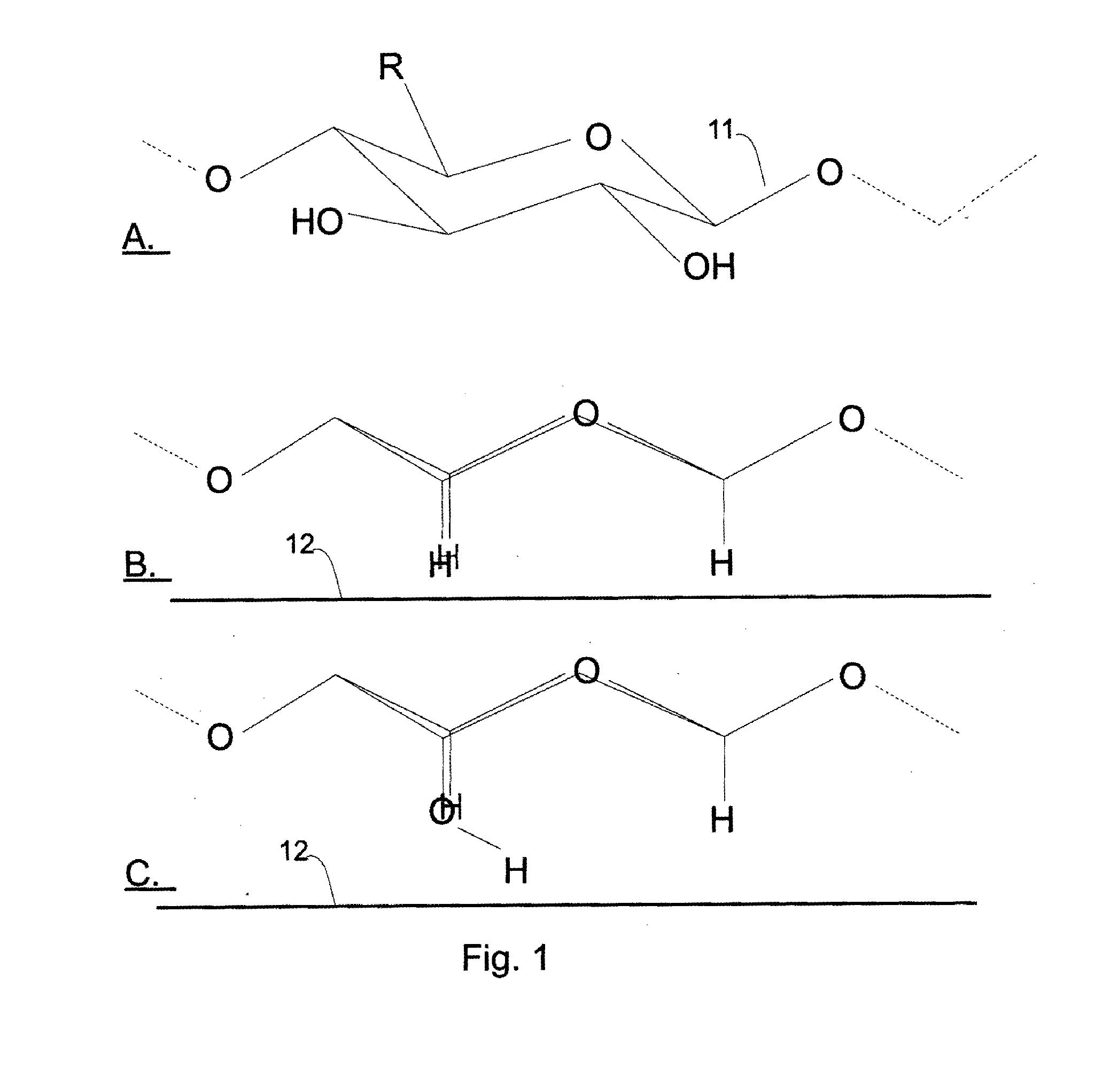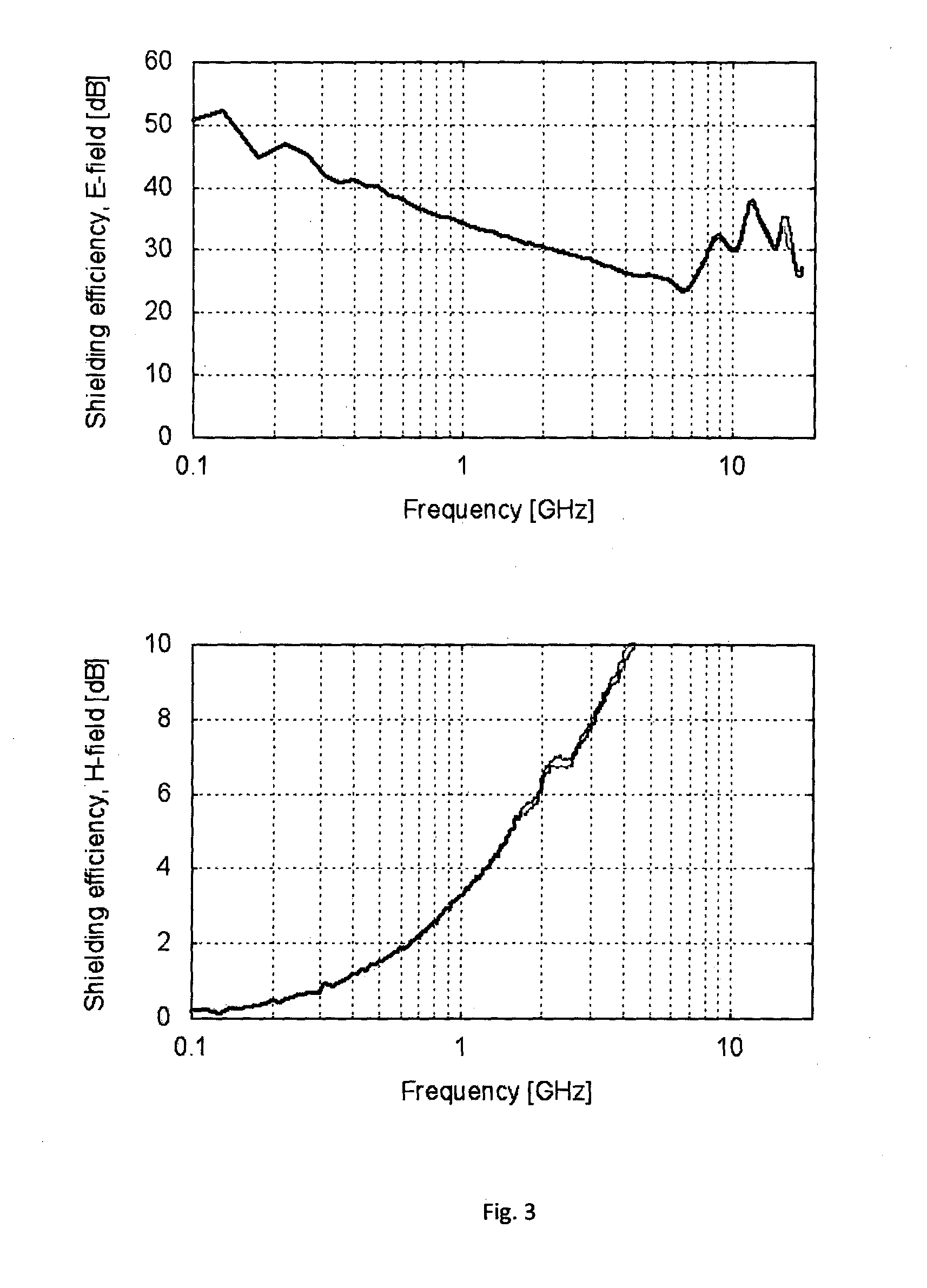Carbon nanotube - polysaccharide composite
- Summary
- Abstract
- Description
- Claims
- Application Information
AI Technical Summary
Benefits of technology
Problems solved by technology
Method used
Image
Examples
example 1
[0093]1 g of MWNTs were added into 100 ml of ethanol / water 5:95 mixture. The mixture was ultrasonically vibrated (200 W), and 1 g of xylan was added in 0.1 g portions during one hour.
[0094]This dispersion was spread on a polycarbonate sheet as a 20 μm film (after drying) using silk printing method. Specific resistance of the film was 0.0045 Ω*cm, and EMI shielding was 40 to 60 dB between 1-18 GHz.
example 2
[0095]2 g of MWNTs were added into 200 ml of water. The mixture was hydrodynamically processed (LV1 Microfluidizer Processor IDEX Material Processing Technologies Group), and 0.75 g of xylan was added in 0.25 g portions during ten minutes, and 0.75 g of mannan was added during ten minutes.
[0096]This dispersion was spread on a polycarbonate sheet as a 20 μm film (after drying) using silk printing method. Specific resistance of the film was 0.002 Ω*cm, and EMI shielding was 40 to 50 dB between 1-18 GHz.
example 3
[0097]1 g of MWNTs were added into 100 ml of water. The mixture was ultrasonically vibrated (200 W), and 0.4 g of xylan was added in 0.08 g portions during ten minutes. This dispersion vas further diluted ten fold. Polyurethane foam cube (side 5 cm) was soaked in the CNT dispersion, and excess of liquid was compressed out. Polyurethane still contained 5.4 g of CNT dispersion, and was dried overnight in 90° C. oven. Polyurethane had specific resistance of 24 Ω*cm.
PUM
| Property | Measurement | Unit |
|---|---|---|
| Fraction | aaaaa | aaaaa |
| Dispersion potential | aaaaa | aaaaa |
| Magnetic field | aaaaa | aaaaa |
Abstract
Description
Claims
Application Information
 Login to View More
Login to View More - R&D
- Intellectual Property
- Life Sciences
- Materials
- Tech Scout
- Unparalleled Data Quality
- Higher Quality Content
- 60% Fewer Hallucinations
Browse by: Latest US Patents, China's latest patents, Technical Efficacy Thesaurus, Application Domain, Technology Topic, Popular Technical Reports.
© 2025 PatSnap. All rights reserved.Legal|Privacy policy|Modern Slavery Act Transparency Statement|Sitemap|About US| Contact US: help@patsnap.com



